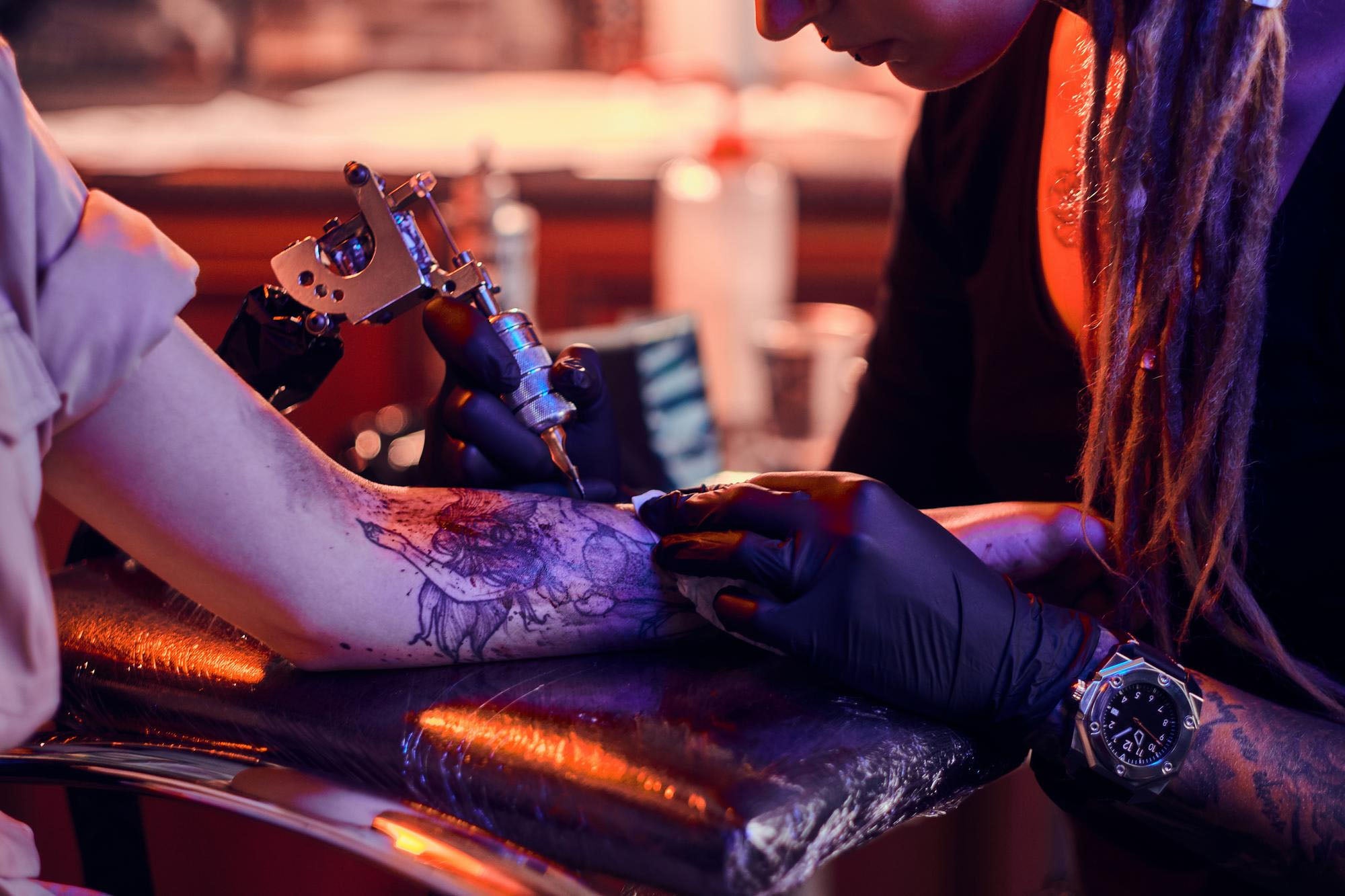
Tattoo Studio Health & Safety Documents

We give you the tools to take control of your Tattoo business's health & safety.
Quickly elevate health & safety standards in your Tattooing business by managing health & safety yourself. Our Tattoo Studio health & safety document templates are designed to be straightforward and user-friendly. Many are pre-populated with relevant information and pre-filled examples are included to make filling in your documents much easier.
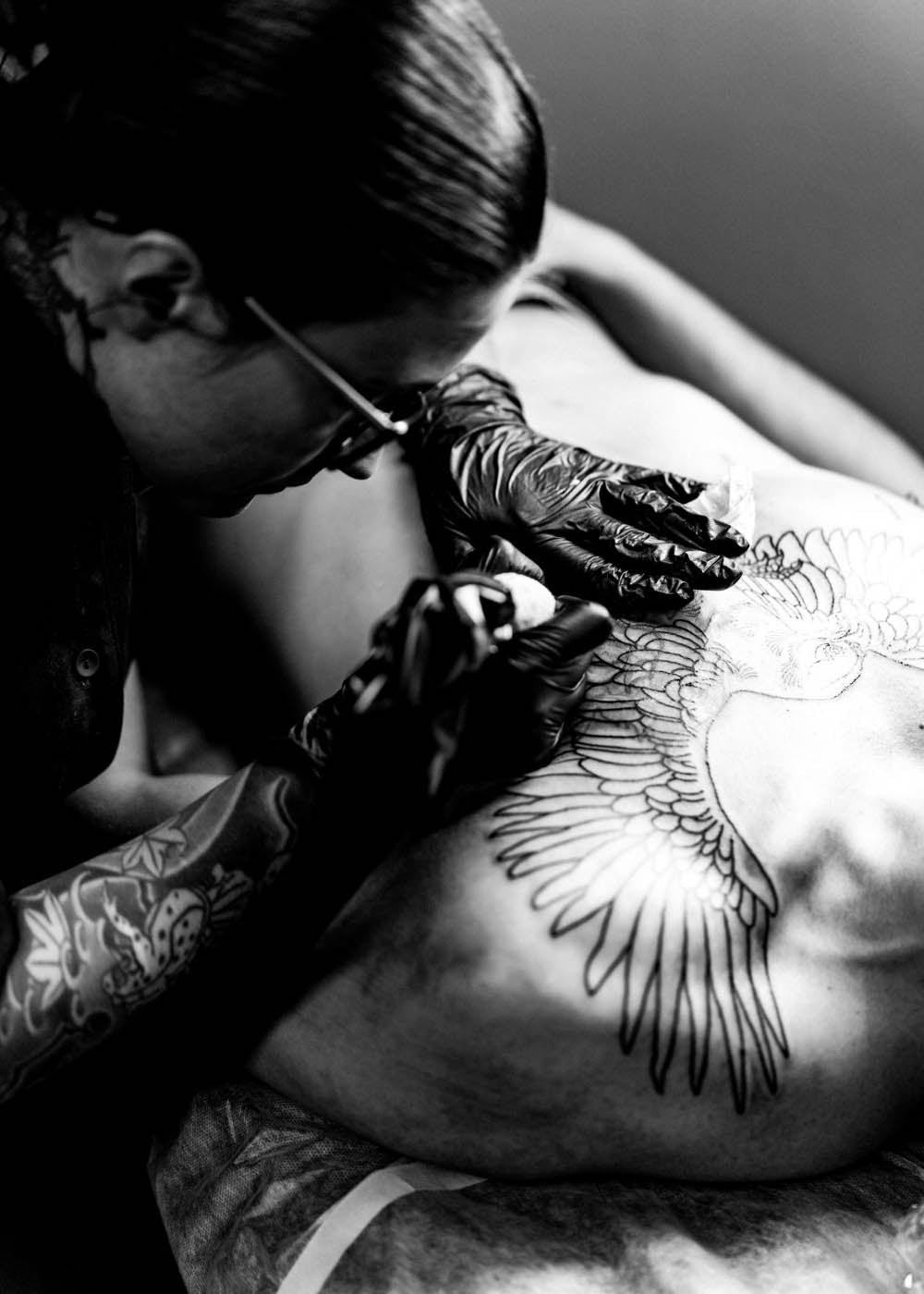
The Significance of Health & Safety in Tattooing:
Transformation of the Tattoo Industry
The evolution of the tattoo industry from an often-underestimated subculture to a globally recognised form of art is nothing short of remarkable. As millions embrace the art of tattooing every year, prioritising health and safety becomes a central pillar for its sustained growth. Ensuring optimal health standards isn't just a mandate—it's essential for retaining the industry's trustworthiness and preventing potential health hazards.
Health Risks in Tattooing
One of the fundamental aspects of tattooing involves breaching the skin, our first line of defence against pathogens. Without adherence to stringent safety standards, tattooing can introduce risks like bacterial infections, blood-borne pathogen transmission—including threats like hepatitis B, hepatitis C, and HIV—and even allergic responses to specific tattoo inks. Moreover, tattoos executed with non-sterile equipment could lead to unintended health issues due to foreign contaminants.
Safeguarding the Industry's Reputation
Beyond direct health implications, rigorous health & safety procedures bolster the tattoo industry's image. Negative experiences or reports of unsafe practices can cast a shadow not only over individual tattoo artists or studios but over the entire sector. By committing to top-tier safety standards, tattoo professionals not only cultivate client trust but also fortify the longevity and reputation of their establishments.
Artistry and Quality in Tattooing
From a purely artistic viewpoint, meticulous health and safety procedures guarantee that tattoos not only look vibrant but also stand the test of time. Subpar practices or compromised equipment can result in tattoos that lose their lustre or don't heal as intended, diminishing both the artist's craftsmanship and the client's experience.
Elevating Tattooing in Modern Society
In summary, the emphasis on health and safety in tattooing is a multifaceted necessity. It's not merely a strategy to stave off medical complications; it's the linchpin of an industry that thrives on trust, artistic prowess, and personal self-expression. By placing health and safety at the forefront, tattoo experts not only safeguard their customers but also elevate the art form's stature in contemporary society.
-
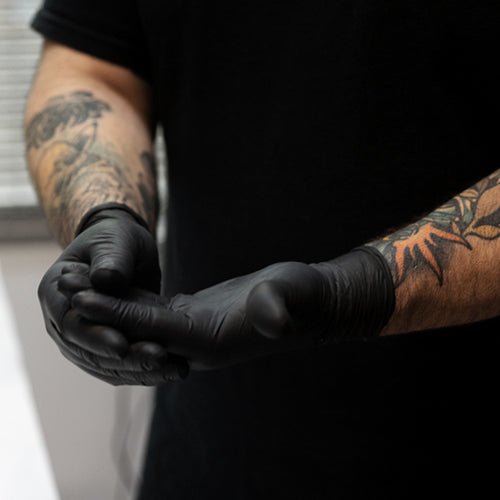
Personal Protective Equipment
Personal Protective Equipment (PPE) is essential in tattooing businesses to protect artists and clients from blood-borne infections and maintain hygiene during the tattoo process. Using gloves, masks, and other protective gear helps prevent cross-contamination, building client trust and ensuring compliance with health and safety regulations.
-

Cleanliness & Hygiene
In tattooing businesses, high standards of cleanliness and hygiene are crucial to prevent infections and the spread of blood-borne pathogens, as the process involves skin penetration. Sterilisation of equipment and maintaining a sterile environment are essential to protect client health, ensure artist safety, and comply with public health regulations, thereby safeguarding the business's reputation and legality.
-
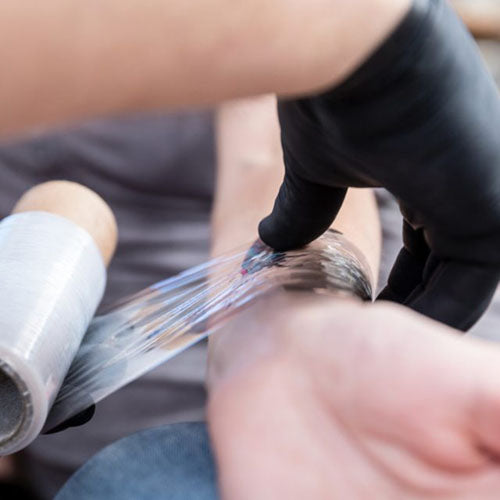
Aftercare & Advice
Aftercare and advice in tattooing businesses are important to ensure tattoos heal properly and to prevent infection, safeguarding the client's health and the tattoo's quality. Effective aftercare support reflects the business’s commitment to customer care, promotes trust, and helps avoid reputational damage and liability, making it a crucial aspect of the service provided.

Why pay expensive consultant fees when you can manage H&S yourself?
Improve your compliance while saving time and money by creating health & safety documents, customised to your business, yourself. Our Tattoo studio health & safety range covers a suite of essential documents including health & safety policies, risk assessments, COSHH forms, fire safety documents, health & safety guidance, safety posters and more.
Benefits of managing H&S yourself...
-
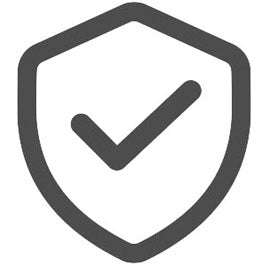
Improve safety
Health & safety at work is about preventing accidents, incidents and ill-health by assessing the work environment, the activities within it, and taking appropriate action.
-

Increase compliance
Our ready to use documents, many of which are prefilled, will enable you to quickly increase your compliance to UK health & safety law.
-

Save money
With UK H&S consultants often charging upwards of £400 per day, there is a better way. Take control and save yourself time and money.

Small Tattoo Studio, Big Safety Standards.
Tattoo businesses often operate under tight budgets and stringent time constraints, making the task of ensuring health and safety compliance particularly challenging. While their passion for the art-form is undeniable, allocating sufficient time and money to thoroughly address health and safety regulations can be a struggle.
Compliance demands can be extensive, encompassing everything from proper sterilisation procedures to employee training and client interactions. For a small tattoo shop, where multitasking is the norm and time is short, managing these obligations can become a daunting task. This underscores the need for streamlined and cost-effective solutions that cater specifically to the unique challenges faced by smaller establishments in the tattoo industry.
At easyhealthandsafety.com we aim to take the friction out of health & safety for tattoo businesses by providing products and guidance so simple to use they are almost enjoyable.
Frequently Asked Questions
Health & Safety in Tattooing: FAQs
What are the health & safety regulations for Tattooists in the UK?
Tattooing in the UK is governed by various regulations including (list not exhaustive):
- Health & Safety at Work etc. Act 1974
- Management of Health & Safety at Work Regulations 1999
- Regulatory Reform (Fire Safety) Order 2005
- Reporting of Injuries, Diseases & Dangerous Occurrences Regulations 2013 (RIDDOR)
- Control of Substances Hazardous to Health 2002 (COSHH)
- Prevision and Use of Work Equipment Regulations 1998 (PUWER)
Improve H&S compliance in your business. Shop our Tattoo Studio health & safety document range here.
How do I ensure sterility and prevent cross-contamination in my tattoo shop?
During the tattoo process, you are faced with blood, plasma, and bodily fluids regularly. Any cross contamination can be dangerous. Single-use needles and sterilised equipment are mandatory for each client. All surfaces should be easily cleanable, and disposable covers are recommended for areas that may come into contact with blood or ink. Staff must be trained in proper sterilisation techniques and effective use of Personal Protective Equipment (PPE).
Other equipment, like grips and tubes, should be sterilised after each session using an autoclave. Regular maintenance and validation of the autoclave is essential.
What should I do in case of an accidental needle-stick injury in my tattoo studio?
If there's an accidental needle stick injury, immediately wash the area with warm water and soap, and encourage bleeding by gently squeezing. Avoid using harsh antiseptics. Seek medical advice immediately, especially if there's a risk of blood-borne virus transmission.
What types of insurance are recommended for tattoo shop owners in the UK?
Employers' Liability Insurance is compulsory if you have employees. Additionally, Public Liability Insurance is highly recommended to cover any claims that could arise from the services you offer. Always consult an insurance advisor to ensure you're adequately covered.
What health & safety considerations should I have for my Tattooing business?
Tattoo shops in the UK are required to adhere to legislation set forth by the Health and Safety Executive (HSE). The approach you take must be proportionate to the hazards associated with your work. An example of this (list not exhaustive) would be to conduct a risk assessment (including a fire risk assessment), provide adequate training to employees, have first-aid facilities, and report specific types of workplace accidents and incidents.
For more detailed information see our 'What does my business need?' page here.
Our Tattoo health & safety range will help you assess and answer these questions, assisting you in improving your compliance with health & safety regulations. Shop our Tattoo Studio health & safety document range here.







